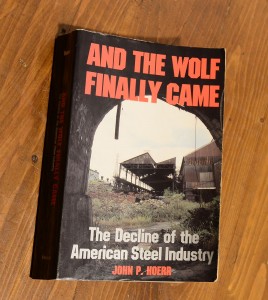Almost 50 years ago, on 31 March 1970, a remarkable era ended largely unnoticed by the public.
After 69 years of unchallenged leadership as the world’s largest steel company, U.S. Steel out of Pittsburgh had been ousted from this position by the newly founded Nippon Steel Corp. of Japan.
Just two years later, the Soviet Union announced that in 1971 it had produced more steel than the U.S., the world’s largest producer at that time.
In the 1950s, the American steel industry still employed 700,000 of the best paid workers worldwide. Almost 90% of these jobs are lost today.
The global steel crisis that began i n 1975 hit the U.S. harder than any other industrialized nation. Entire regions such as the Mahoning and the Monongahela Valleys were economically devastated.
n 1975 hit the U.S. harder than any other industrialized nation. Entire regions such as the Mahoning and the Monongahela Valleys were economically devastated.
The reasons for this decline, which is unique especially in its speed, were discussed by John P. Hoerr already in 1988 in his book “And the Wolf Finally Came”.
The best book on this subject I know.
In 1965, when the American empire of steel still seemed to be in order, there were 237 blast furnaces at 72 locations. A soon to be started series will introduce all of them.
Steel Nerd
Steel industry photos and facts
